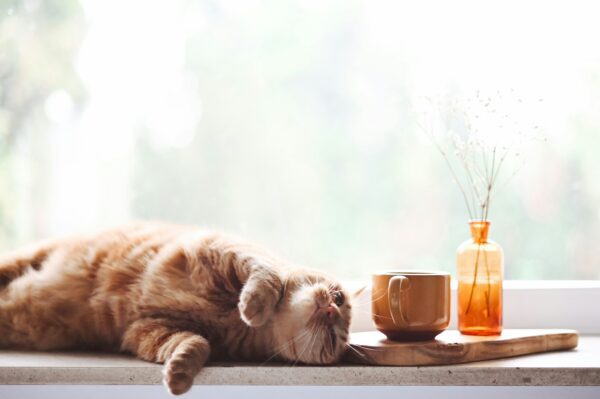Cats, with their mysterious and independent nature, often mask signs of illness. As responsible pet owners, it’s crucial to be vigilant and knowledgeable about common cat illnesses to ensure the well-being of our feline friends. In this comprehensive guide, we will delve into the signs, symptoms, and prevention strategies for some of the most prevalent cat illnesses.
Identifying Common Cat Illnesses
1. Upper Respiratory Infections (URIs):
Upper respiratory infections are akin to the common cold in humans. Sneezing, nasal discharge, and watery eyes are typical signs. To prevent URIs, ensure your cat is up-to-date on vaccinations and maintain proper hygiene, especially in multi-cat households.
2. Urinary Tract Infections (UTIs):
Frequent urination, straining, and blood in the urine may indicate a UTI. Encourage water intake, provide a balanced diet, and keep the litter box clean to prevent UTIs. Regular veterinary check-ups are essential for early detection.
3. Gastrointestinal Issues:
Vomiting and diarrhea can result from various causes, including dietary indiscretion or underlying health issues. Maintain a consistent and high-quality diet, and be cautious about introducing new foods. If digestive issues persist, consult your veterinarian.
4. Parasites (Fleas, Ticks, Worms):
External parasites like fleas and ticks, as well as internal parasites like worms, can affect your cat’s health. Use vet-recommended preventatives, keep the living environment clean, and schedule regular deworming to protect your cat from parasites.
5. Diabetes:
Increased thirst, excessive urination, and changes in appetite may indicate diabetes. A well-balanced diet, regular exercise, and weight management are crucial for preventing feline diabetes. Regular veterinary visits can help monitor your cat’s overall health.
6. Dental Issues:
Dental problems, such as gingivitis and periodontal disease, are common in cats. Brush your cat’s teeth regularly, provide dental treats or toys, and schedule professional dental cleanings to maintain oral health.
Additional signs to look for

Recognizing the signs of illness in cats is the first step in providing timely care. While each illness may manifest differently, some general signs include:
Changes in Behavior:
Lethargy: A noticeable lack of energy or enthusiasm in your cat could indicate an underlying health problem. If your cat is unusually quiet and spends more time resting than usual, it may be a sign of illness.
Withdrawal: Cats may withdraw or isolate themselves when they’re not feeling well. If your usually social cat becomes more distant, it’s worth investigating.
Altered Eating Habits:
Loss of Appetite: A sudden disinterest in food or a significant decrease in appetite could be a sign of various health issues, from dental problems to internal organ disorders.
Increased Food Consumption: Conversely, an increase in food consumption without an apparent reason might signal diabetes, hyperthyroidism, or other metabolic conditions.
Weight Changes:
Sudden Weight Loss: Unexplained weight loss is a concerning sign. It could be indicative of various conditions, including parasites, diabetes, or organ dysfunction.
Sudden Weight Gain: While less common, sudden weight gain may also be a cause for concern, particularly if it’s not linked to changes in diet or activity level.
Grooming Changes:
Excessive Grooming: Cats are meticulous groomers, but excessive grooming, especially if it leads to hair loss or skin irritation, may indicate discomfort or an underlying skin condition.
Decreased Grooming: On the other hand, a cat that suddenly stops grooming itself might be experiencing pain or mobility issues, and this warrants attention.
Changes in Litter Box Habits:
Changes in Urination: Pay attention to any changes in your cat’s urination habits. Frequent trips to the litter box, straining, or vocalization during urination could indicate a urinary tract infection or other urinary issues.
Changes in Defecation:
Irregularities in bowel movements, such as diarrhea or constipation, may be symptomatic of gastrointestinal problems or dietary issues.
Understanding these signs is crucial for early intervention and veterinary care. Cats are masters at hiding discomfort, so any noticeable deviation from their usual behavior or routines should be taken seriously. Regular veterinary check-ups, along with a keen eye on your cat’s day-to-day activities, will help you catch potential health issues early on, ensuring your feline companion receives the care they need for a long and healthy life.
Preventive Measures for Cat Health

- Regular Veterinary Check-ups:
Scheduling routine vet visits allows for early detection of potential health issues. Vaccinations, dental check-ups, and preventive care can significantly contribute to your cat’s well-being.
- Balanced Nutrition:
Provide a high-quality, balanced diet suitable for your cat’s age and health requirements. Consult your veterinarian for dietary recommendations tailored to your cat’s specific needs.
- Hydration:
Ensure your cat has access to clean, fresh water at all times. Hydration is crucial for kidney function and overall health.
- Parasite Control:
Follow your vet’s recommendations for flea, tick, and worm prevention. Regular grooming and maintaining a clean living environment also contribute to parasite control.
- Enrichment and Exercise:
Stimulate your cat’s physical and mental well-being through interactive play and environmental enrichment. Regular exercise helps maintain a healthy weight and supports overall fitness.
- Stress Management:
Cats are sensitive to changes in their environment. Minimize stressors and provide safe spaces for your cat to retreat when needed. This is particularly important in multi-pet households.
- Dental Care:
Incorporate dental care into your cat’s routine. Brush their teeth regularly, offer dental treats or toys, and schedule professional cleanings as recommended by your veterinarian.

Understanding common cat illnesses, recognizing their signs, and implementing preventive measures are integral components of responsible pet ownership. By staying informed and proactive, you can contribute to your cat’s longevity and well-being. Remember, any noticeable changes in your cat’s behavior or health warrant a prompt visit to the veterinarian. Your feline companion deserves the best care, and with the right knowledge, you can ensure they lead a happy and healthy life.









